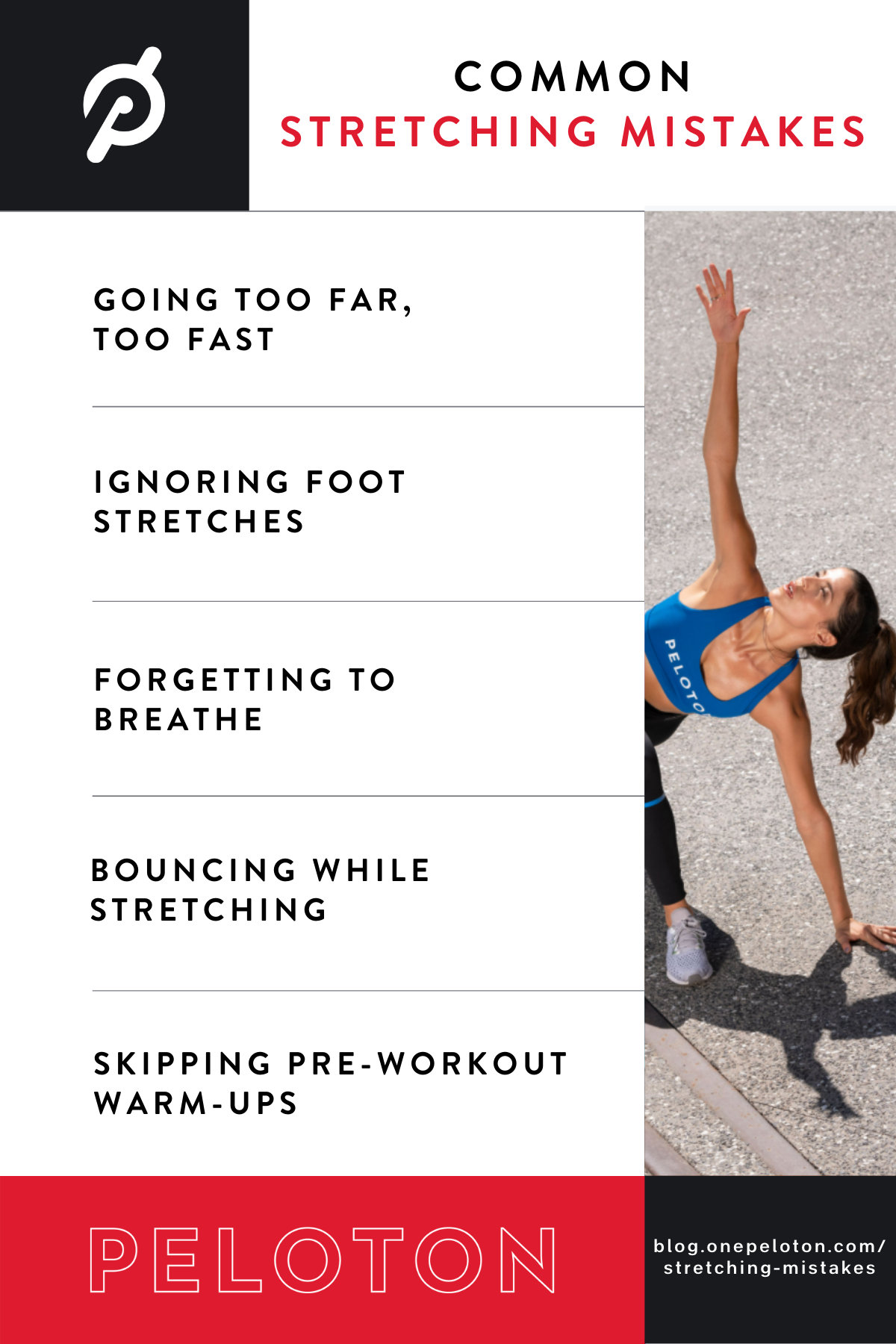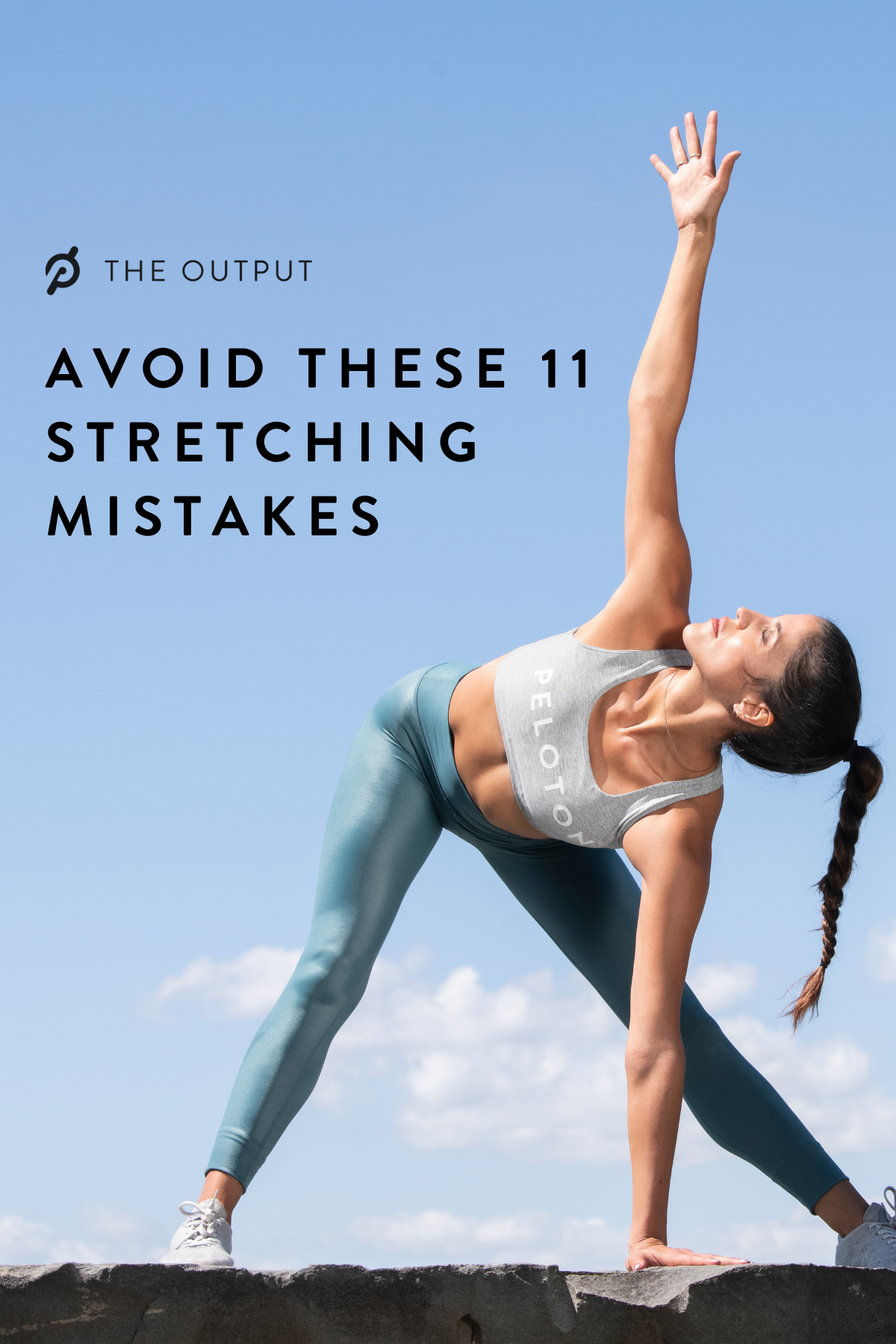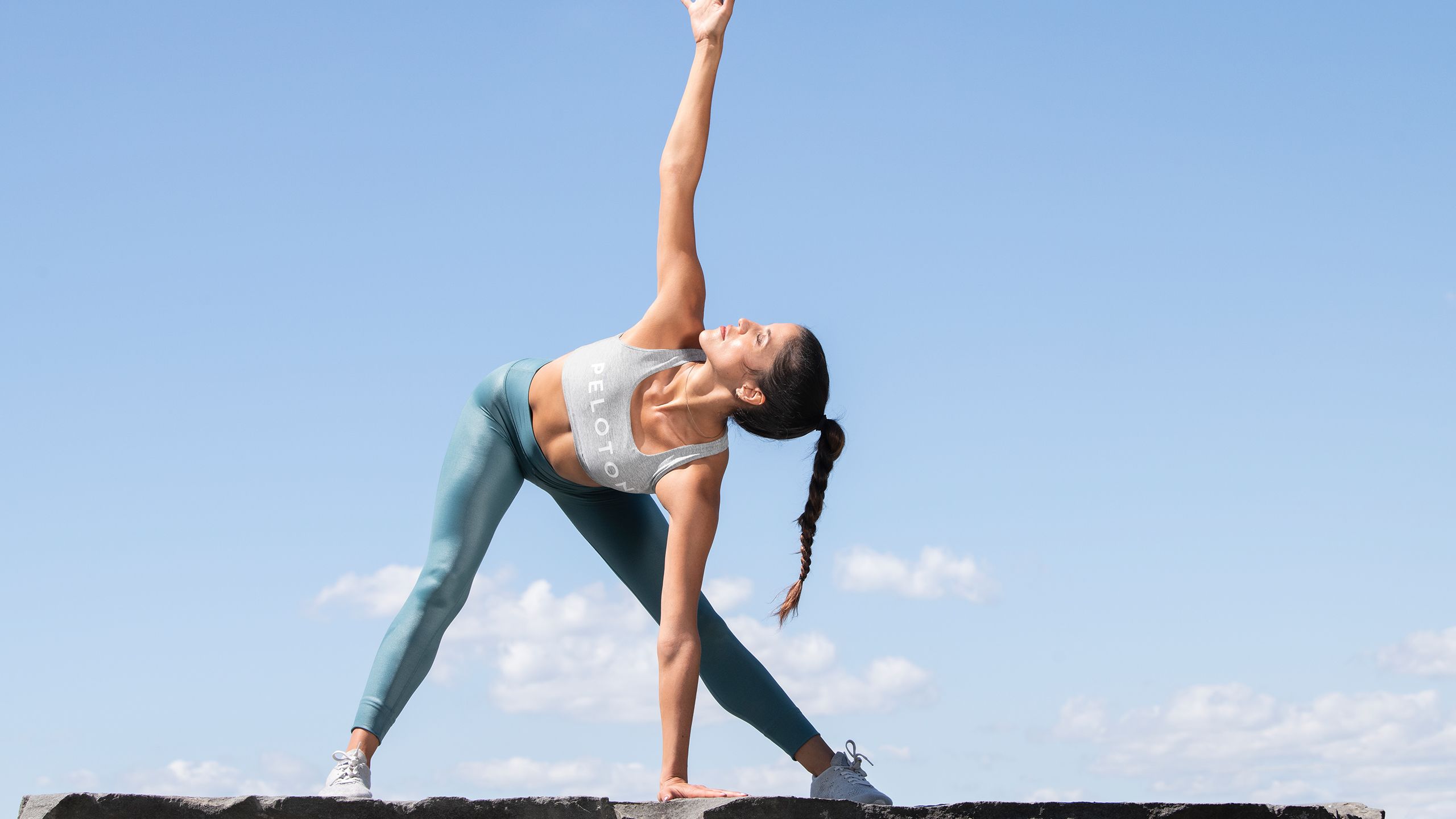Stretching is by far one of the most important parts of your workout routine. Not only will a pre- and post-workout stretch boost your flexibility and reduce the risk of injury, but it also improves your performance (which could lead to a new PR!). We went to Peloton instructor and stretch queen Hannah Corbin to break down the most common stretching mistakes and how to avoid them. Get ready to feel better than ever.
Mistake #1: Avoiding Stretching Altogether
We know it can be tempting to hop off your Bike or Tread and head straight to the shower—but those extra few minutes spent stretching are so crucial, especially after an intense workout. “The more you ask of your muscles, the more love they're going to need,” Hannah says. “Go for a gentle stretch after every workout, something that encourages your muscles in a direction of a length but doesn't punish them.”
By investing a few extra minutes into your workout routine, you’ll be protecting your body from injury. “Think about a rubber band: If you're constantly adding tension without ever releasing it, it's going to snap,” Hannah says. “Don't snap your muscles!”
Mistake #2: Skipping a Pre-Workout Warm Up
Before a workout of any type, be it on the Bike, Tread or floor, you must warm up first. That is non-negotiable, according to Hannah. “You wouldn't throw pasta in a cold pot of water to get it limber, so don't stretch without warming up!”
A warm up elevates body temperature and increases blood flow to create more force with your body for an effective workout. “Stretching, on the other hand, increases flexibility in the muscles and range of motion in the joints,” Hannah adds.
Once you’re warmed up, she recommends stretching your quads, hamstrings, calves and the front of your hips before cycling and running classes. Or if you’re headed into a yoga session, stretch the front and outside of your hips. (Pro tip: Hannah’s 10-minute Hip Stretch has great exercises to target all those areas.)
Mistake #3: Going too Far, too Fast
Don’t push it and try to do something like a split on day one. “That freaks your muscles out, and they will seize up in an effort to protect themselves,” Hannah says. “Instead, be at the edge of your comfort zone without being completely outside of it.”
Forcing your body into a stretch without building up solid stretch foundations is a recipe for injury. “You're looking at joint pain, muscle strain, even muscle damage,” Hannah says. “So stretch often and stretch well!” (Yup, that means after every workout.)
Mistake #4: Ignoring THIS Important Body Part
You may be giving plenty of stretch love to your neck, shoulders and back, but there’s one body part you’re likely skipping: your feet! “Don’t forget them,” Hannah says. “We're on our feet all day long, and they rarely get the love they deserve.”

Mistake #5: Mixing up Static and Dynamic Stretching
Static stretching is the “classic” type of stretching most people think of. In doing so, you’re holding a stretch for a period of time at the near-limit of your range of movement. Dynamic stretching means you’re moving through your range of motion to achieve a deeper stretch. It’s an active way to achieve more movement. But here’s what you need to keep in mind: “Static stretching should never be used before or during a workout because it will actually decrease your body's ability to create force,” Hannah says. “Dynamic stretching, on the other hand, is a form of mobilization, so it is a great option for a pre-workout to get your body ready to perform.” We repeat: dynamic stretching for your pre-workout, static for post-workout.
Mistake #6: Stretching Inconsistently
Hannah suggests mobilizing for 5 to 10 minutes before a workout, and then adding 5 to 10 minutes of stretching (at a minimum) to your post-workout routine. “But really, if you want the benefits, focus less on the amount of time and more on how often,” she explains. “Five minutes a day over the course of five days is a thousand times more beneficial than twenty minutes once a week. Make it a habit, and you'll be a stretchy rockstar in no time!”
And remember, when you take a rest day, enjoy it. “Don't feel like you have to push yourself into stretching when your muscles are cold,” Hannah adds. “Take a day for yourself and give yourself permission to chill!”
Mistake #7: Ignoring Signals From Your Body
How can you tell which body parts need a good stretch and which body parts you’ve taken too far? If your legs feel heavy, tired and achy, that’s definitely a sign they’re in need of “stretching love,” according to Hannah. But if you're sweating or breathing hard once you start stretching, you've gone too far. “Back it up and hang out at the edge of your comfort zone instead of trying to live completely outside of it—that's where the good stretch happens!” she says.
Mistake #8: Not Taking Advantage of “Down Time” to Stretch
Watching TV is one of Hannah’s favorite times to stretch and foam roll. “I feel like I'm treating my body while lazing around, and how could it get better than that?” she says. “Even still, you want to aim for a minimum of a 30-second stretch no matter what you're doing, or otherwise, you won't see the stretchy benefits.”
One of Hannah’s favorite moves to do while sitting in front of the computer or TV is a neck and upper trap stretch. “It’s super effective for releasing tension in the neck and shoulders, where we carry a lot of stress. It’s also incredibly easy,” she says. Check out one of Hannah’s 5-minute Cool Down Rides or a 10-minute Seated Stretch for a demonstration.

Mistake #9: Forgetting to Breathe
For maximum effect, you should breathe in through the nose and out through the mouth while stretching. “Make sure you're not holding your breath or pursing your lips,” Hannah says. “You want your breathing to be relaxed so you can melt into calm—and your stretches—more fully.”
Mistake #10: Bouncing While Stretching
Stretching is intended to prevent injuries, but you can still hurt yourself if you’re bouncing during your stretching routine. “When you're in a good stretch, you should be right at the edge of your comfort zone already,” Hannah says. “Adding bouncing pushes past beneficial stretching and into the risk of injury. You want to flirt with your line—don't pass it—and remember to breathe.”
Mistake #11: Stretching When Injured
If you’ve got regular post-workout soreness, it’s fine to foam roll and take an epsom salt soak. But if it’s something more serious, don’t try to cure an injury by stretching through the pain. Your best option is to see a physical therapist, according to Hannah. “Don't leave an injury to chance. Your muscles move your whole body, and you want to treat them with respect,” she says. “Treat your body like it belongs to someone you love, and take care of it by resting up before asking it for more.”
Join Hannah in a stretching class on the Peloton App!


